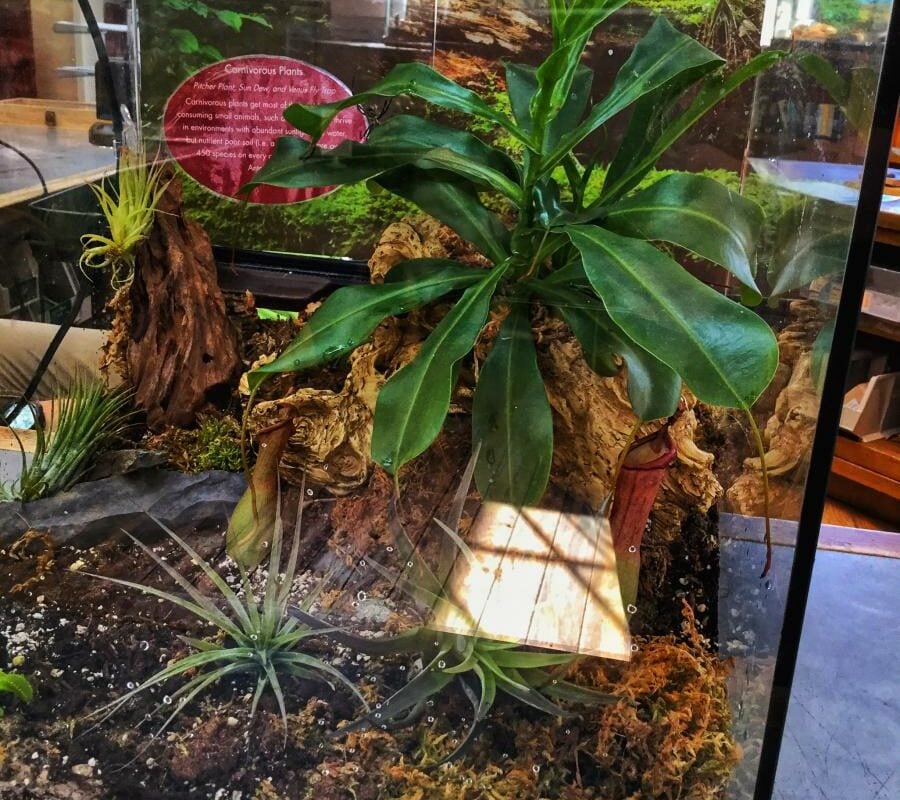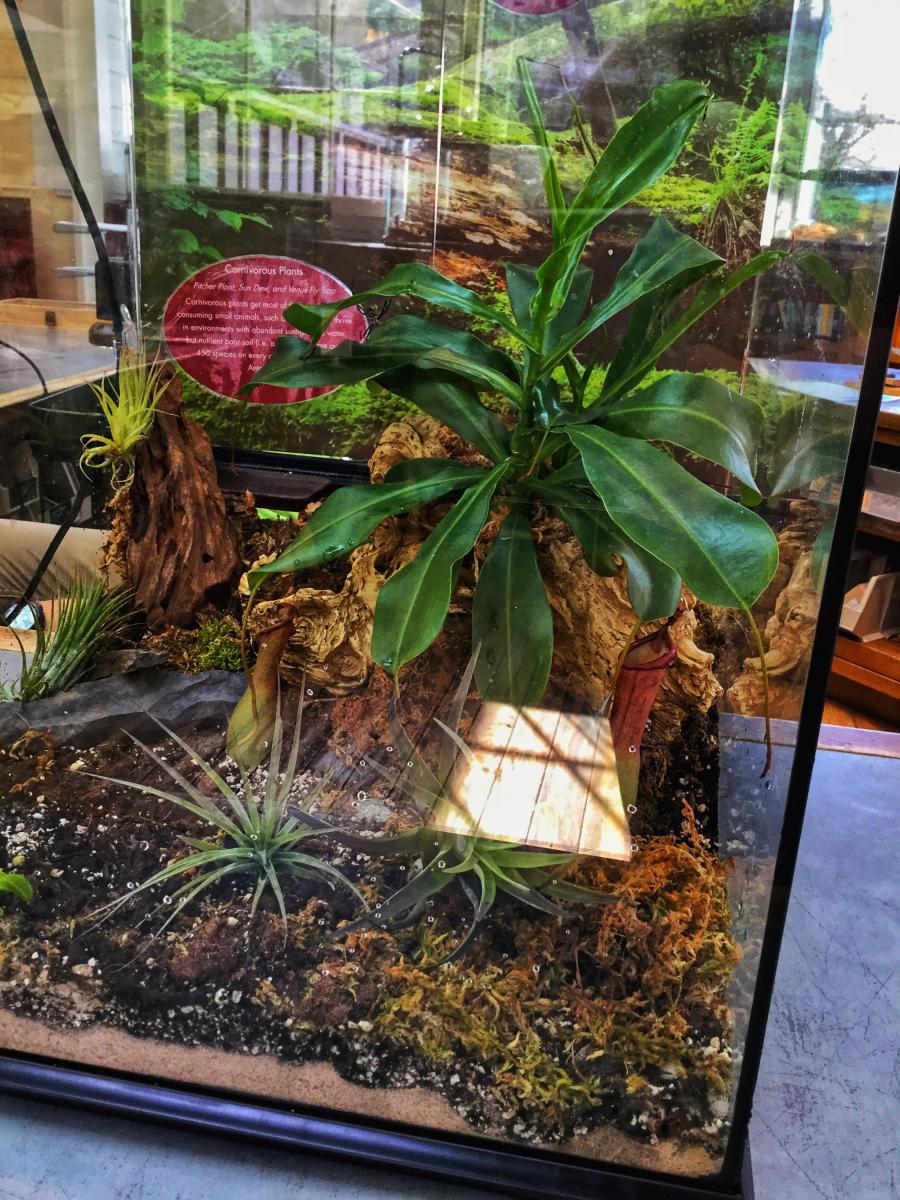Ask Kidspace! Carnivorous Plants

Hey there, my name is Rachel Masters. I am the Nature Programs Specialist here at Kidspace. This month for Ask Kidspace, I am super excited to be answering questions aboutsome of my favorite plants.
Kristina, Mikey, and Allison all want to know “why carnivorous plants eat bugs?” Stephen and Benjamin are wondering what carnivorous plants eat, and Cassandra asked  “How long can a pitcher plant live.”
“How long can a pitcher plant live.”
Carnivorous plants are fascinating and these are all fantastic questions.
So WHY do carnivorous plants eat bugs? Well, it is an adaptation to the environment that they live in. Most plants need water, sunlight, and soil with lots of nutrients in it to survive. Kind of like how we need vitamins to be healthy. Carnivorous plants typically live in bogs where there are low to no nutrients in the water or soil. These platns adapted their leaves and structures to be able to digest animals to get the nutrients they need.
That brings us to “what do they eat?” Generally, carnivorous plants eat insects. So we really could call them insectivorous plants. But there are a few exceptions to that rule. Carnivorous plants are not picky and will eat whatever crawls, lands, and flies into their traps. Some pitcher plants and fly traps can eat small amphibians, mammals, reptiles, and birds.
As to the life-span, they can live as long as they have favorable conditions which could be months or years. If it’s a carnivorous plant that you are taking care, the lifespan is up to you. Here is a link to an awesome video that explains a little more HOW carnivorous plants eat.
Next time you are at Kidspace, check out our carnivorous plant terrarium in the Nature Exchange.

